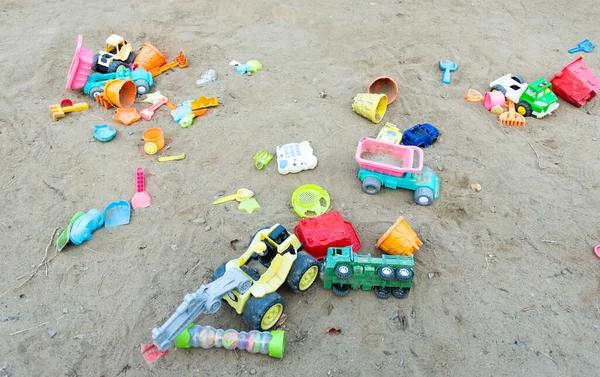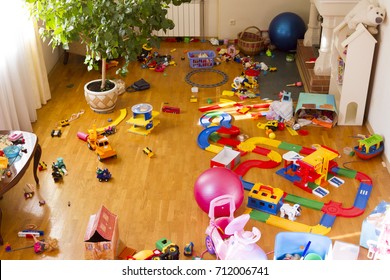

Toys scattered everywhere is a common problem in homes with children. This article offers simple yet effective ideas to keep play areas tidy, fostering a more organized and stimulating environment for children. We’ll delve into the issues of clutter, discuss practical strategies for toy organization and maintenance, and provide valuable insights for creating a more functional playroom. The structure of this article will be broken down into sections, beginning with the challenge of clutter and its effect on children, followed by several practical solutions for tackling the mess. We conclude with a summary of tips and solutions.
Understanding the Challenge of Clutter
The Impact of Clutter on Children
Studies have shown that a cluttered environment can negatively affect a child’s focus and concentration. Visual stimuli can overwhelm young minds, making it harder to concentrate on tasks and explore creativity. A disorganized play area often leads to frustration and a lack of motivation. Children may become overwhelmed by the number of toys and lose interest in play. The problem extends beyond just visual overload to the emotional aspects. Children may experience anxiety or stress if they are unable to manage their environment. This can also be seen in behavioral problems.
The Role of Play in Child Development
Play is crucial for a child’s physical, cognitive, and emotional development. Play promotes creativity, problem-solving skills, social interaction, and emotional regulation. However, a cluttered play area can hinder these crucial developmental stages. Toys scattered everywhere make it challenging to find specific items or engage in play. This makes choosing a task difficult. The ideal play space is organized and stimulating, inspiring children to explore their creativity.
Identifying Solutions for Maintaining Playroom Organization
This article will address the problem of toys scattered everywhere by outlining several practical and effective strategies to keep play areas tidy, making the space more stimulating and nurturing. We will cover a range of solutions, from storage solutions and designated play areas to consistent playtime routines. Following these strategies will not only declutter your children’s play areas but also enhance their cognitive and emotional development. Let’s dive into the details.
Related Post : Kitchen Drawers Always Messy? Tips for Functional Storage Solutions
Designated Play Areas
Creating Dedicated Spaces
Creating a dedicated space for play is the first step towards a tidy play area. Designate a specific room or corner of a room for play, storing toys away from living areas or high-traffic zones. This separation can help maintain order and encourage children to keep their toys within the designated space. By having a separate play area, children begin to understand the importance of keeping their toys in one space. The space should be appropriate and have sufficient storage for all toys. This makes cleaning up much simpler and encourages kids to start putting things away when they’re finished.
Designing a Child-Friendly Play Area
The design of the play area should be child-friendly and stimulating, taking into account their developmental needs and preferences. Include comfy seating, soft flooring, and engaging visual elements. Ensure adequate lighting and ventilation, creating a welcoming and safe environment for play. A colorful and well-lit space is more engaging than a dark and chaotic one. Consider incorporating elements like playhouses, dress-up areas, or building blocks to encourage exploration and imagination.
The Power of Storage Solutions
Choosing the Right Containers
Choosing appropriate containers for storing toys is crucial for keeping the play area organized. Use storage bins, baskets, or shelves that are visually appealing and encourage children to participate in organizing and putting away their toys. Clear, labeled containers make it easier for children to identify and locate specific items. Durable and easy-to-clean containers are also crucial as playtime can involve spills and messes. Consider investing in storage solutions that are both attractive and robust for long-term use.
Creative Storage Solutions for Toys
Beyond traditional storage, consider using furniture with built-in storage solutions such as ottoman storage, bed storage, or shelves. A multi-level storage system or wall-mounted shelves can help optimize storage space, while also adding visual interest and organization. Utilizing vertical space is often the most effective way to make the most of small spaces. Use storage solutions that are visually appealing and match the play area’s aesthetic. This can encourage children to participate in the tidy-up process.
Establishing Consistent Playtime Routines
Creating a Routine for Cleanup
Establish a consistent playtime routine that includes dedicated cleanup time after play. This routine should become a regular part of your child’s day, encouraging the habit of putting toys away after use. A quick cleaning-up procedure will be much simpler than tackling a large clean-up session. Clear and concise rules about putting toys away can be written down or displayed on a chart for reference.
Fostering Good Play Habits
Encouraging Self-Regulation
Encourage children to develop self-regulation skills by allowing them some control over their play area. Involve them in the cleaning-up process. Age-appropriate tasks can be delegated to foster responsibility and ownership. Allowing children to organize their toys to some extent encourages a sense of responsibility, ownership, and self-regulation.
Managing Unwanted Toys
Reducing the Toy Inventory
Assess the toys in your play area and eliminate toys that are no longer being used or aren’t engaging. A reduced toy inventory can help maintain a tidy play area. This will prevent your play area from becoming cluttered and disorganized. Don’t hesitate to donate or sell these items to free up space and minimize the number of toys in the play area. By reducing your toy inventory, you can make the play area feel less overwhelming.
Professional Organization for Support
Consulting a Professional Organizer
For severe clutter issues or complex play areas, consider consulting a professional organizer to create a personalized play area organization plan tailored to your family’s specific needs. This can save you time and effort in organizing your play area. This will help to create a custom solution.
Utilizing Time Effectively
Maximizing Playtime
Allocate specific playtime durations or engage in a “toy rotation” strategy to keep your children interested in their toys. This can prevent an overabundance of toys and excessive clutter. You can schedule playtime for the day.
Utilizing Technology
Smart Storage Solutions
Explore the use of smart storage solutions or smart home devices that can enhance organization and reduce visual clutter. This can streamline the process of maintaining a tidy play area and encourage responsibility in your children. Some examples are smart containers or labeling systems that enhance the overall process for organization. In short, this helps manage their toy collection and make tidying up a more manageable process.
In conclusion, decluttering play areas and fostering tidy play habits can significantly improve a child’s focus, creativity, and overall well-being. By implementing these simple strategies, parents and caregivers can create a more organized and stimulating environment for their children to play and learn. To get started, consider a designated play area, investing in storage solutions, or embracing a consistent playtime routine. If you are still struggling, consider consulting a professional organizer for customized guidance and support in creating a streamlined play environment for your child.